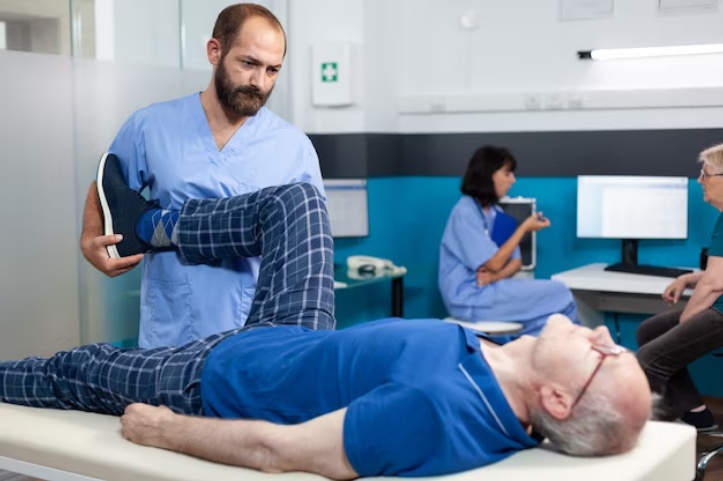Introduction:
Chiropractic care is a dynamic field that relies on a diverse array of tools and equipment to provide effective and patient-centered treatments. In this comprehensive guide, we will navigate the world of chiropractic tools and equipment, exploring their roles, mechanisms, and the collective impact they have on the success of chiropractic practices.
The Diverse Palette of Chiropractic Tools and Equipment:
-
Adjusting Tables:
-
Chiropractic Adjusting Tables: These specialized tables provide a stable and adjustable surface for patients during adjustments. They come in various types, including drop tables, traction tables, and flexion-distraction tables.
-
Portable Chiropractic Drop Tables: Offering the convenience of mobility, these tables maintain the dropper mechanism for precise adjustments but are designed for practitioners on the move.
-
Chiropractic Rolling Tables: Equipped with wheels or rollers, rolling tables allow chiropractors to easily reposition patients without manual adjustments, enhancing efficiency.
-
-
Chiropractic Adjusting Instruments:
-
Activator Adjusting Instruments: Handheld devices delivering controlled, low-force impulses for gentle adjustments, providing an alternative to manual techniques.
-
Toggle Recoil Instruments: Utilizing a quick thrust and release technique, these instruments assist in delivering precise adjustments, particularly to the upper cervical spine.
-
-
Soft Tissue Instruments:
-
Graston Instruments: Stainless steel tools for soft tissue mobilization, addressing issues such as scar tissue, fascial restrictions, and muscle tightness.
-
Myofascial Release Tools: Handheld tools designed for myofascial release, a technique targeting the fascial system to improve flexibility and reduce muscle tension.
-
-
Diagnostic Equipment:
-
Digital X-ray Machines: Providing high-resolution images for accurate diagnostics, aiding chiropractors in assessing spinal misalignments and other structural issues.
-
Surface Electromyography (SEMG): Measuring muscle activity to assess the function of the nervous system and identify areas of muscle imbalance.
-
-
Therapeutic Devices:
-
TENS Units and Electrical Stimulation Devices: Using electrical impulses for pain management and muscle relaxation.
-
Ultrasound Therapy Devices: Utilizing sound waves for tissue healing, inflammation reduction, and pain relief.
-
Cold Laser Therapy Tools: Non-invasive devices using low-level laser light to stimulate cellular activity and promote healing.
-
The Artistry of Chiropractic Practice:
-
Chiropractic Adjustments:
-
Manual Adjustments: Involving the skilled application of hands to manipulate the spine and joints, addressing misalignments and restoring proper joint function.
-
Instrument-Assisted Adjustments: Using tools like activators and toggle recoil instruments for controlled impulses, providing a gentler approach suitable for various patients.
-
Table-Assisted Adjustments: Utilizing specialized chiropractic tables with dropping mechanisms or traction features to facilitate adjustments and enhance precision.
-
-
Soft Tissue Mobilization:
-
Incorporating tools like Graston instruments for targeted soft tissue mobilization, addressing adhesions, scar tissue, and muscle restrictions.
-
Utilizing myofascial release tools to release tension in the fascial tissues, improving flexibility and mobility.
-
The Collective Impact on Chiropractic Success:
-
Patient-Centered Care:
-
The diverse toolbox allows chiropractors to tailor treatments to individual patient needs, promoting personalized and patient-centered care.
-
Patient comfort is enhanced through the selection of appropriate tables and tools, contributing to a positive and supportive treatment environment.
-
-
Efficiency and Precision:
-
Specialized tables and instruments contribute to the efficiency of chiropractic adjustments, allowing practitioners to deliver precise and targeted treatments.
-
Chiropractors can seamlessly transition between tools and equipment, optimizing their approach for different conditions and patient preferences.
-
-
Versatility in Practice Settings:
-
Portable and rolling tables provide versatility, enabling chiropractors to extend their services beyond traditional clinic settings.
-
The adaptability of tools allows chiropractors to cater to diverse patient populations and address a wide range of musculoskeletal issues.
-
FAQs :
-
How do chiropractic adjusting tables differ from portable chiropractic drop tables? A: Chiropractic adjusting tables are stationary tables used in clinics, offering stability and adjustable features. Portable chiropractic drop tables, on the other hand, are designed for mobility, allowing practitioners to provide adjustments in various settings.
-
What is the role of diagnostic equipment like digital X-ray machines in chiropractic care? A: Digital X-ray machines provide detailed images for accurate diagnostics, aiding chiropractors in assessing spinal misalignments, structural issues, and conditions that may require adjustments.
-
How do soft tissue instruments like Graston tools contribute to chiropractic care? A: Graston instruments are used for soft tissue mobilization, addressing issues such as scar tissue, fascial restrictions, and muscle tightness. They enhance the effectiveness of chiropractic care by targeting specific soft tissue concerns.
-
Can chiropractic rolling tables be used in traditional clinic settings? A: Yes, chiropractic rolling tables can be used in traditional clinic settings. Their wheeled base allows for easy mobility within the clinic, providing flexibility in patient repositioning and treatment delivery.
-
How do chiropractors choose the appropriate tools for specific patients? A: Chiropractors consider factors such as the patient's condition, preferences, and specific treatment needs when selecting tools. The choice of tools is tailored to individual cases, promoting personalized and effective care.
Conclusion:
The complete toolbox of chiropractic tools and equipment represents the palette from which chiropractors craft their art—the art of restoring health, promoting well-being, and providing patient-centric care. Each tool plays a vital role in the intricate dance of chiropractic practice, contributing to the efficiency, precision, and success of treatments.


No comments yet